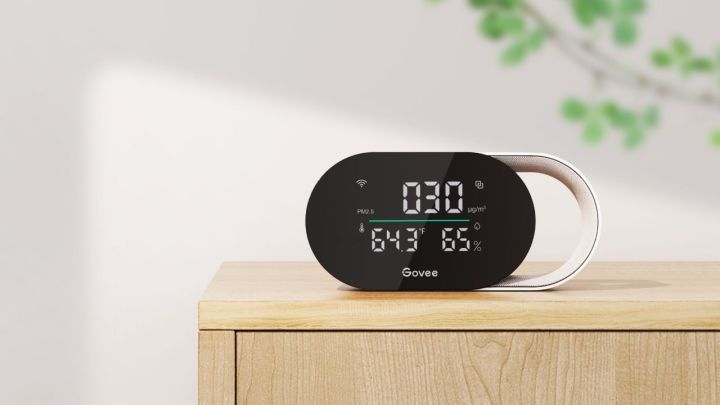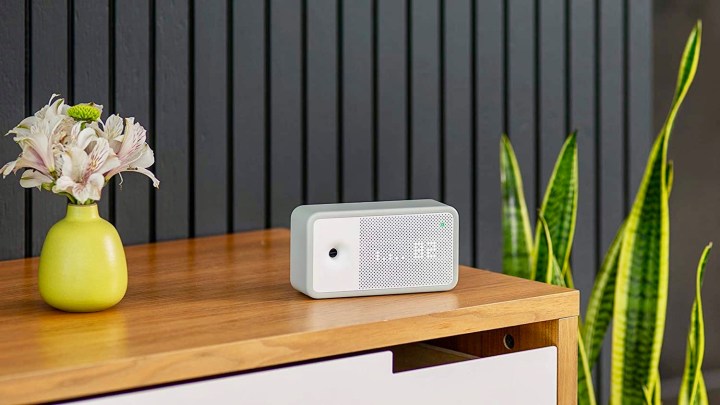Spring is upon us, bringing with it warmer weather, blooming trees — and heaps of pollen. This time of year can be tough for people with seasonal allergies, and it also brings the start of wildfire season for folks out west. Air purifiers are a great way to keep your home clean from all these airborne particulates, but what about air quality monitors? Are they worth adding to your home?
Here’s a closer look at air quality monitors, what they can offer, things to consider when shopping for one, and if they’re truly worth the investment.
What is an air quality monitor?

An air quality monitor measures various airborne particulates to give you an overall indication of how healthy your air is. From wildfire smoke and seasonal allergens to pet dander and dust, air quality monitors are designed to measure a wide range of pollutants.
These typically work independently of air purifiers, meaning air quality monitors will do nothing to make your air cleaner. Instead, they’re designed to give you a comprehensive look at the health of your indoor atmosphere and tend to do a much better job of that task than built-in sensors on your typical air purifier.
What to consider when buying an air quality monitor

One of the most important things to consider when buying an air quality monitor is what the device can actually measure. Air quality monitors come with all sorts of price tags — and the more money you spend, the more measurements you’ll get. Most products measure temperature, humidity, and PM2.5 (particulates that are 2.5 micrometers or smaller), while others bundle in volatile organic compounds, carbon dioxide, and carbon monoxide measurements.
Beyond more measurements, higher-priced products often tend to give more accurate readings, which is something to keep in mind before picking up the cheapest air quality monitor you can find. Expect to spend just under $100 for a solid air quality monitor, although you can find decent options with the basics for around $50 — such as the Govee Air Quality Monitor.
You’ll also want to look at auxiliary features like smart home connectivity or companion apps. Companion apps are particularly useful, as they give you a way to check your air quality history or monitor your home remotely.
Installation typically isn’t an issue with air quality monitors, as most of them are designed to simply sit on a table or countertop (so you won’t need to break out any tools to get them working). You will, however, want to look at their overall size and if they can be mounted if you’d prefer to have them on a wall.
Who would benefit from an air quality monitor?

Air quality monitors probably aren’t a necessity for most homes. But if you live in wildfire country, have seasonal allergies, or deal with health concerns that are exacerbated by poor indoor air quality, bringing one into your home is a wise decision. This will help you pinpoint exactly when your air quality is dropping and give you plenty of information on how you can remedy the issue.
Not only are most air quality monitors surprisingly affordable, but they’re easy to use and easy to set up. They can also help you determine if your air purifiers are working as intended — or if it’s time to get a duct cleaning for your HVAC system.
Anyone that doesn’t fall into one of the above categories can probably skip out on this smart home accessory. But if you do decide to pick one up, consider starting your research with your list of the best air quality monitors.
Editors’ Recommendations
Services Marketplace – Listings, Bookings & Reviews